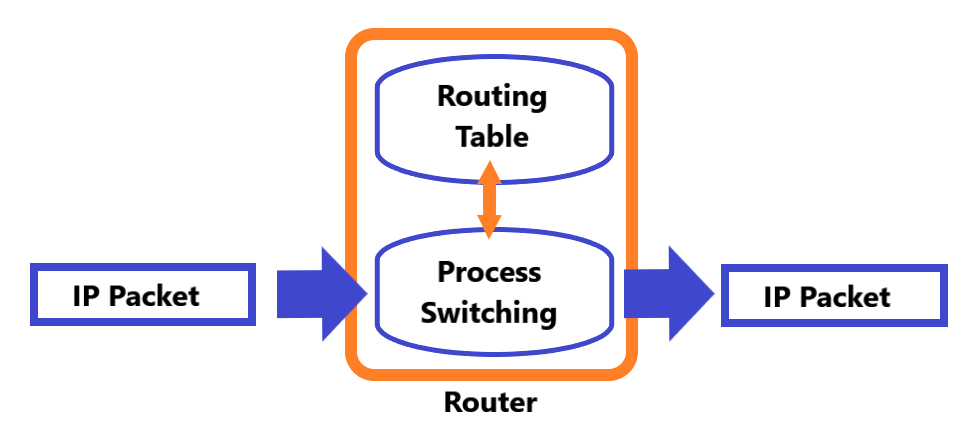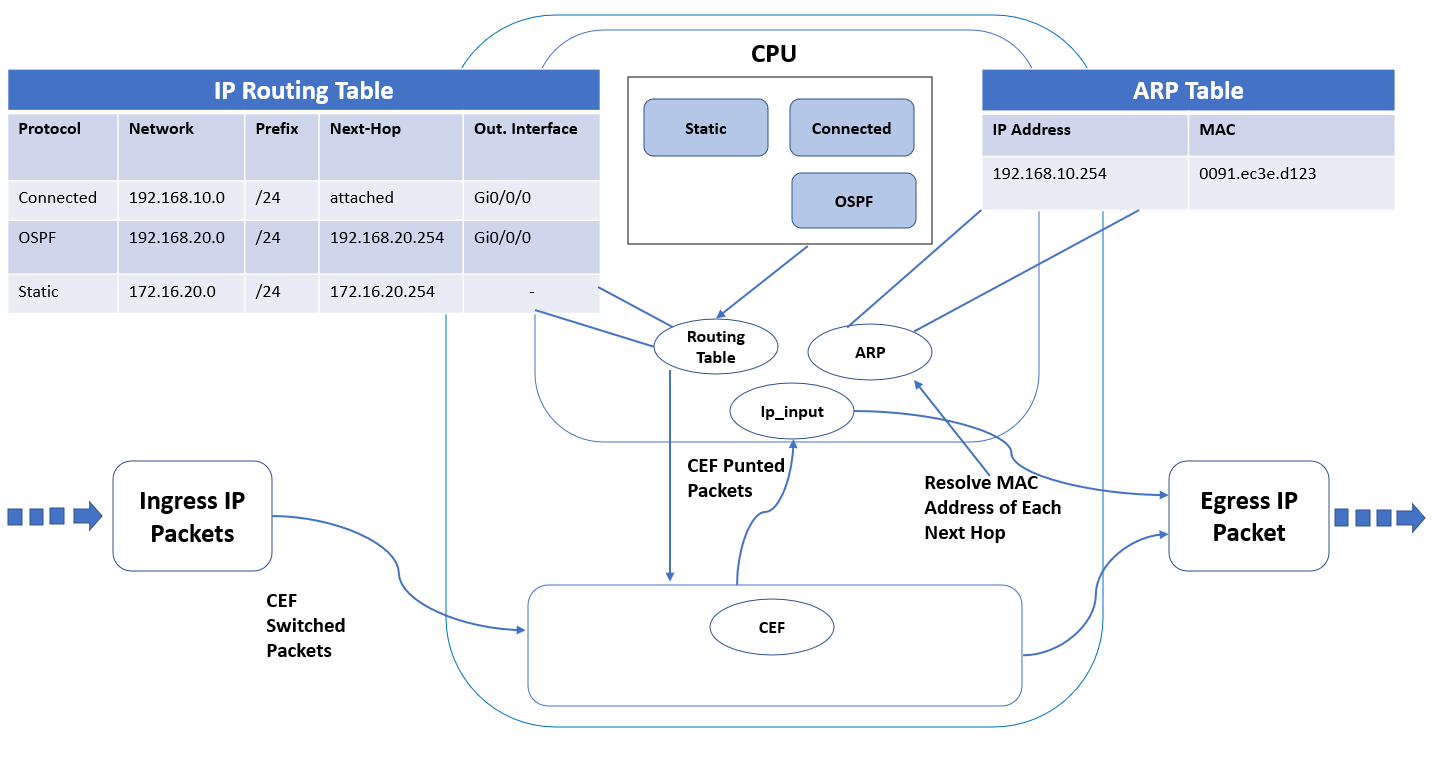The earlier Cisco routers used the process switching mechanism (also called software switching or slow path), where the packets are switched through the routers’ CPU. This process is done in the software. Thus, process switching presents problems in terms of speed and CPU utilization. Process switches are done by the hardware whenever possible.
When the router receives an IP packet, it will decide whether to forward the packet or drop it. With process switching, the router will remove the Layer 2 Ethernet frame header. Next, it will check the destination IP address in the routing table for the IP packet, and if there’s a match, it will rewrite the MAC address and forwards it to the outgoing interface.

Nowadays, Cisco uses fast switching and Cisco Express Forwarding (CEF) to enhance the switching process for a large volume of packets. Process switching is now used as a fallback for CEF. It processes punted IP packets when CEF can’t switch them.
The following packets are needed to be handled by software switching:
- Packets originated or are destined for the router using control traffic or an IP routing protocol
- Packets that are complicated for the hardware, such as IP packets with IP options
- Packets that need further information which is not yet known, like Address Resolution Protocol (ARP)
Process Switching Example
The image below shows the process done when Cisco Express Forwarding (CEF) can’t switch the packet. The router receives an IP packet from the input interface, and CEF cannot switch the packet, so it is punted to the CPU. The routing table and the ARP table are checked to identify the next hop IP address, the outgoing interface, and the MAC address.
It will then overwrite the destination address with the next hop MAC address and the source MAC address with the outgoing Layer 3 interface MAC address. It also decrements the IP time-to-live (TTL) value, recomputes the IP header checksum, and forwards the process switched packet to the next-hop router.

The routing table or Routing Information Base (RIB) stores the information from directly connected and static routes and dynamic routing protocols. The ARP table stores the information obtained from the Address Resolution Protocol (ARP).
Download our Free CCNA Study Guide PDF for complete notes on all the CCNA 200-301 exam topics in one book.
We recommend the Cisco CCNA Gold Bootcamp as your main CCNA training course. It’s the highest rated Cisco course online with an average rating of 4.8 from over 30,000 public reviews and is the gold standard in CCNA training:
